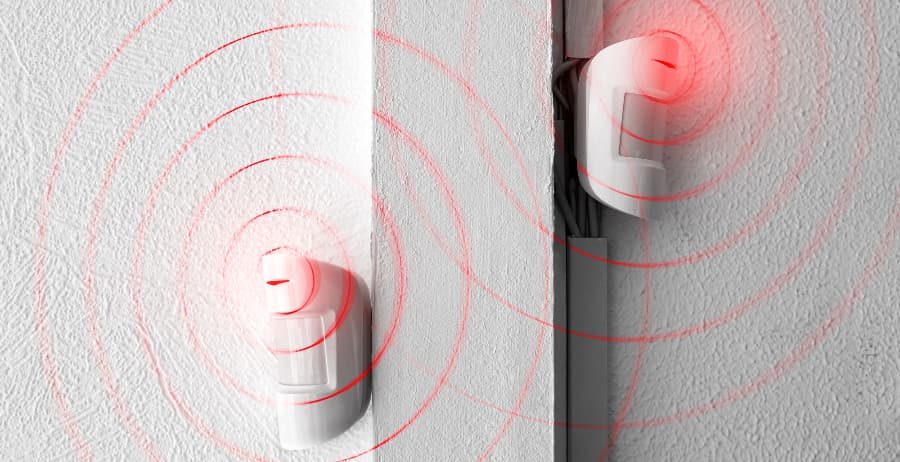How to cut down on motion sensor false alarms in your Lexington home

Motion sensors are critical aspects in a comprehensive home security plan, as they’ll alert you whenever an unwelcome guest is moving through your house. Regrettably, they’re also susceptible to false alarms, causing Lexington homeowners to lose sleep. If you’re looking for solutions, review our tips on minimizing motion sensor false alarms.
What initiates motion detector false alarms?
Most residential motion detectors employ passive infrared (PIR) technology to find activity. They monitor changes in infrared radiation within their detection zone and can determine when someone is moving by their heat signature. False alarms are often caused by:
- Pets climbing on tabletops or furniture
- Bright sunlight shining through a window
- Different heat sources, such as air ducts and fireplaces
- Rapid temperature or humidity changes, which cause equipment to be hypersensitive or non-functional
Microwave motion sensors are an additional widespread option that detects activity by constantly sending out and assessing electromagnetic waves. These active motion sensors recognize movement due to modifications in the reflected signal. Any unforseen movement, like curtains shifting when your HVAC fan starts up, can initiate an alarm.
Suggestions for limiting motion sensor false alarms at your Lexington home
In addition to interrupted sleep, motion sensor false alarms are increasingly problematic as they can numb you to genuine dangers. Moreover, frequent false alarms may become an annoyance for emergency providers and may impact future response times. Luckily, you can help circumvent them by following these recommendations:
- Investigate the sensitivity levels of your sensors and adjust to your furry friend’s size and behavior.
- Even when you have pet-friendly motion sensors, it’s advisable not to direct them at high-activity spots like food dispensers.
- Avoid directing motion sensors at windows receiving heavy sunlight.
- Make certain rooms are properly insulated to prevent drastic temperature fluctuations.
- Frequently dust and clean equipment to keep sensors clear.
- Monitor batteries and replace as needed. Certain motion detectors will even inform you when batteries are getting low.
- Get them installed professionally to ensure optimal positioning.
You may also choose multi-function devices that employ both active and passive means to identify activity, leading to a higher degree of accuracy.
How can you incorporate motion sensors into your Lexington smart home?
Installing motion sensors in a new smart home is a terrific way to boost your convenience and security. You’ll have the opportunity to do the following:
- Receive immediate alerts on your smartphone whenever movement is found. You might also program them to update you when your children arrive home from school.
- Program indoor cameras to record when a motion sensor is tripped.
- Adjust temperature settings or lighting in accordance with your home’s occupancy. This feature can help reduce utility bills.
Top smart home motion sensors, like those installed by Vivint, continue to harness artificial intelligence (AI) to better recognize real threats and reduce false alarms.
Create your Vivint smart home with reliable motion sensors
Get leading motion sensors in Lexington from Vivint when you design your fully functional smart home. Our tools are pet-sensitive and let you program various home automation actions. You’ll also enjoy a five-year battery and automatic mobile alerts. Reach out to (859) 203-1366 today to get started.